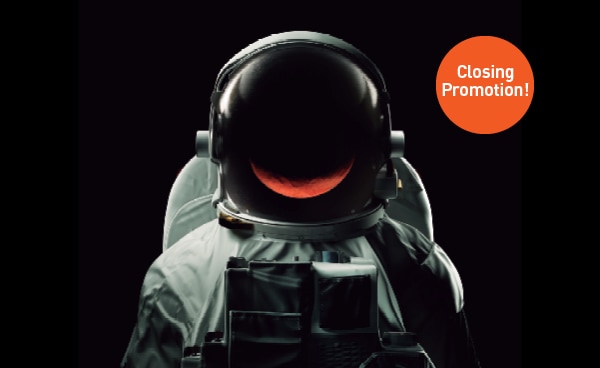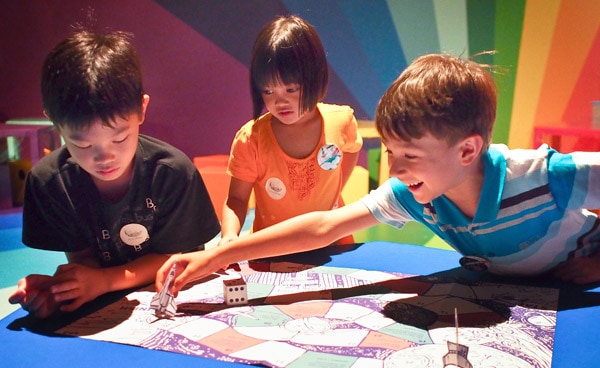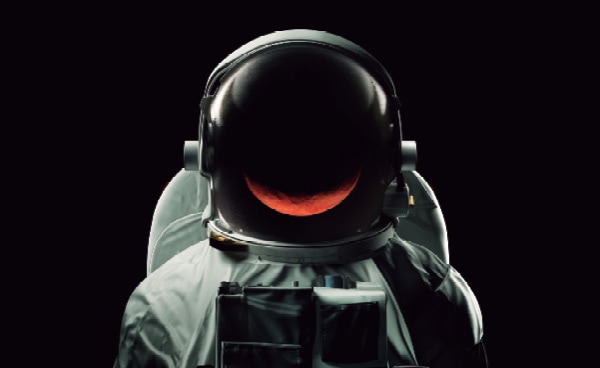
EXHIBITION

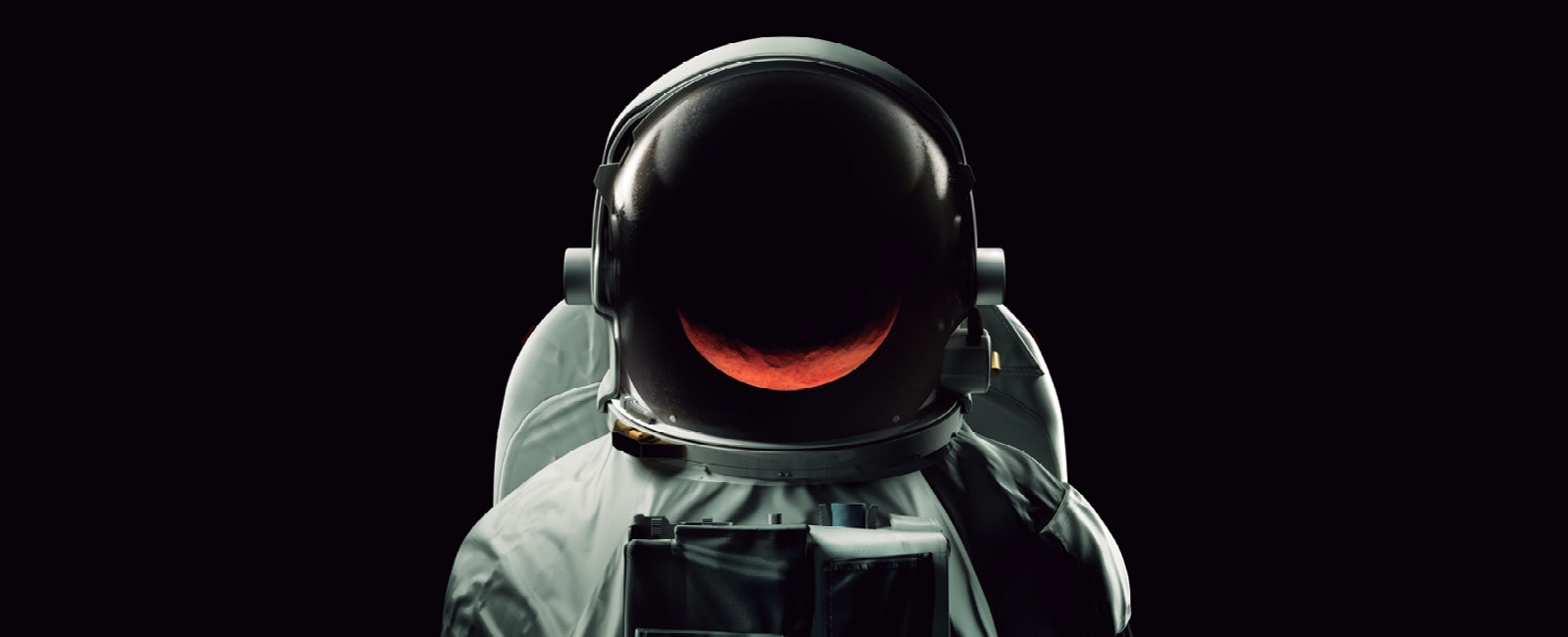
EXHIBITION
Mars: The Red Mirror
Capturing our imagination like no other planet, Mars has fascinated humanity for millennia. Mars: The Red Mirror takes visitors on an expedition through history and across cultures to learn how our neighbouring planet has been seen as the god of war, a god of agriculture, an ancestral symbol for masculinity and a muse for science fiction. It features over 300 objects, including rare scientific manuscripts, historical artefacts, an authentic Martian meteorite, films and contemporary art.
First shown in Barcelona in 2021, this new version of Mars: The Red Mirror turns its lens to Asia. It traces Mars' ancient imprints in China, India, and Japan, and celebrates the legacy of pioneering Asian astronomers. It provides a glimpse into Mars' portrayal in Southeast Asian pop culture, and also features work from Singapore's Space Faculty, who champion space technology's transformative potential in Asia.
Mars: The Red Mirror is curated by Juan Insua, and presented by ArtScience Museum and the Centre of Contemporary Culture of Barcelona (CCCB).
![]() Admission Times
Admission Times
(Last entry at 6pm)
Ticketed Admission
Singapore Residents:
Adult: S$20
Concession: S$16
Tourists:
Adult: S$23
Concession: S$18
Explore the Exhibition
-

Mars in Ancient Cultures
-

Science And Fiction of the Red Planet
-

Mars in the Anthropocene
-
Mars in Ancient Cultures
This story begins in the distant past, at a point in history when planets were just mysterious spheres in the sky—regarded as mystical symbols rather than scientific discoveries.
The dawn of Mars, the Red Planet, is as much a riddle as the origins of the universe itself. Hymns were sung and epics were written by ancient civilisations, who believed this celestial body contained an ancient energy, regarding it as a distant god.
Through the centuries, humanity’s understanding and relationship with the Red Planet has evolved, yet across history and cultures it is consistently associated with and is represented as a god of war. Every culture has given it a different name—Nergal, Mangala, Harmakhis, Auqakuh and Ares are just a few—but it is most widely known by the title Mars.
Featured artworks
4artworks-
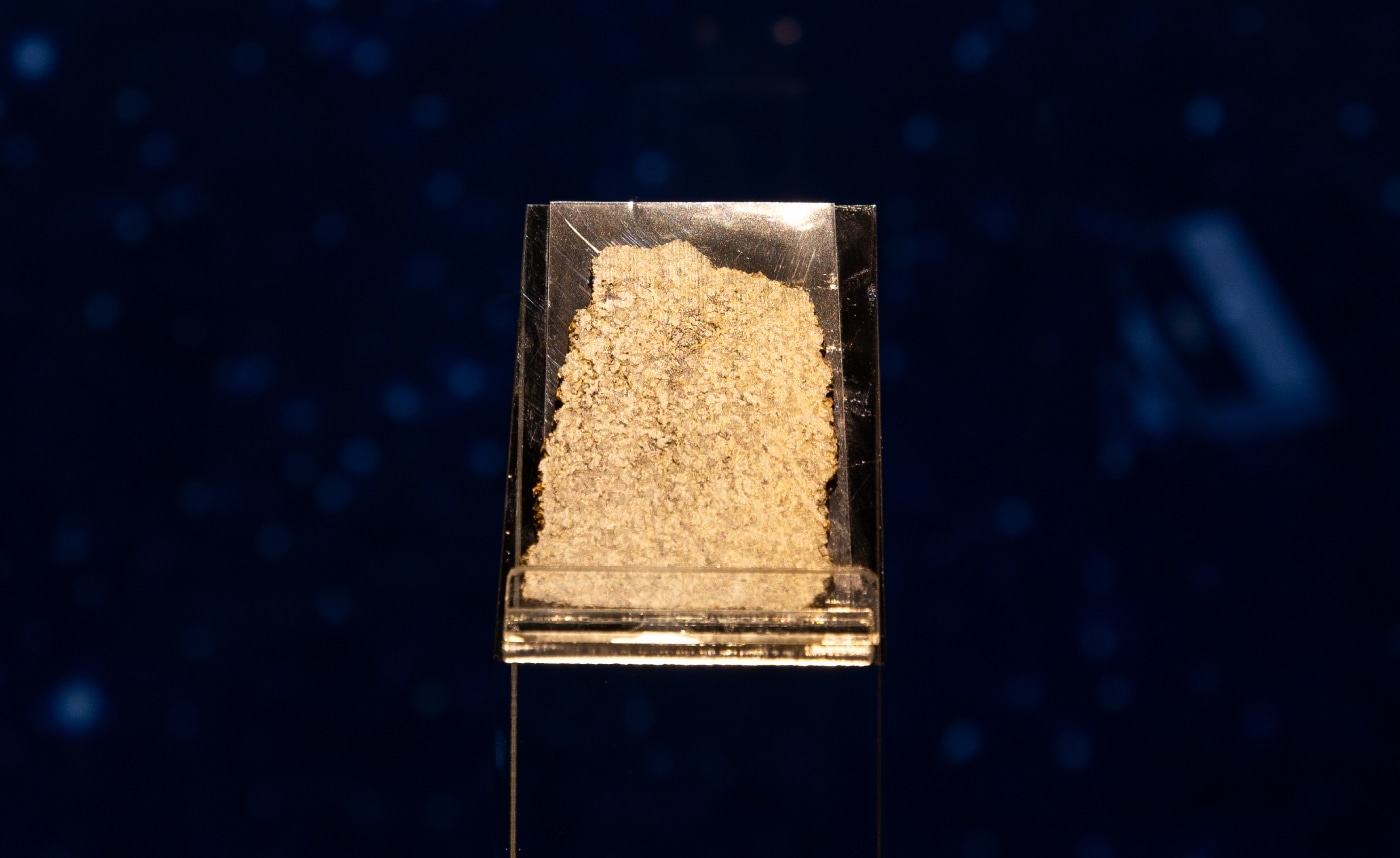 Meteorite KG 002 (Fragment), Martian meteorite, discovered in 2010 in the Sahara, near Ksar Ghilane in Tunisia, by José Vicente Casado and David Allepuz, identified by Jordi Llorca, Professor of Chemical Engineering at the Polytechnic University of Catalonia. Courtesy of Jordi Llorca Piqué, Professor at Polytechnic University of Catalonia.
Meteorite KG 002 (Fragment), Martian meteorite, discovered in 2010 in the Sahara, near Ksar Ghilane in Tunisia, by José Vicente Casado and David Allepuz, identified by Jordi Llorca, Professor of Chemical Engineering at the Polytechnic University of Catalonia. Courtesy of Jordi Llorca Piqué, Professor at Polytechnic University of Catalonia. -
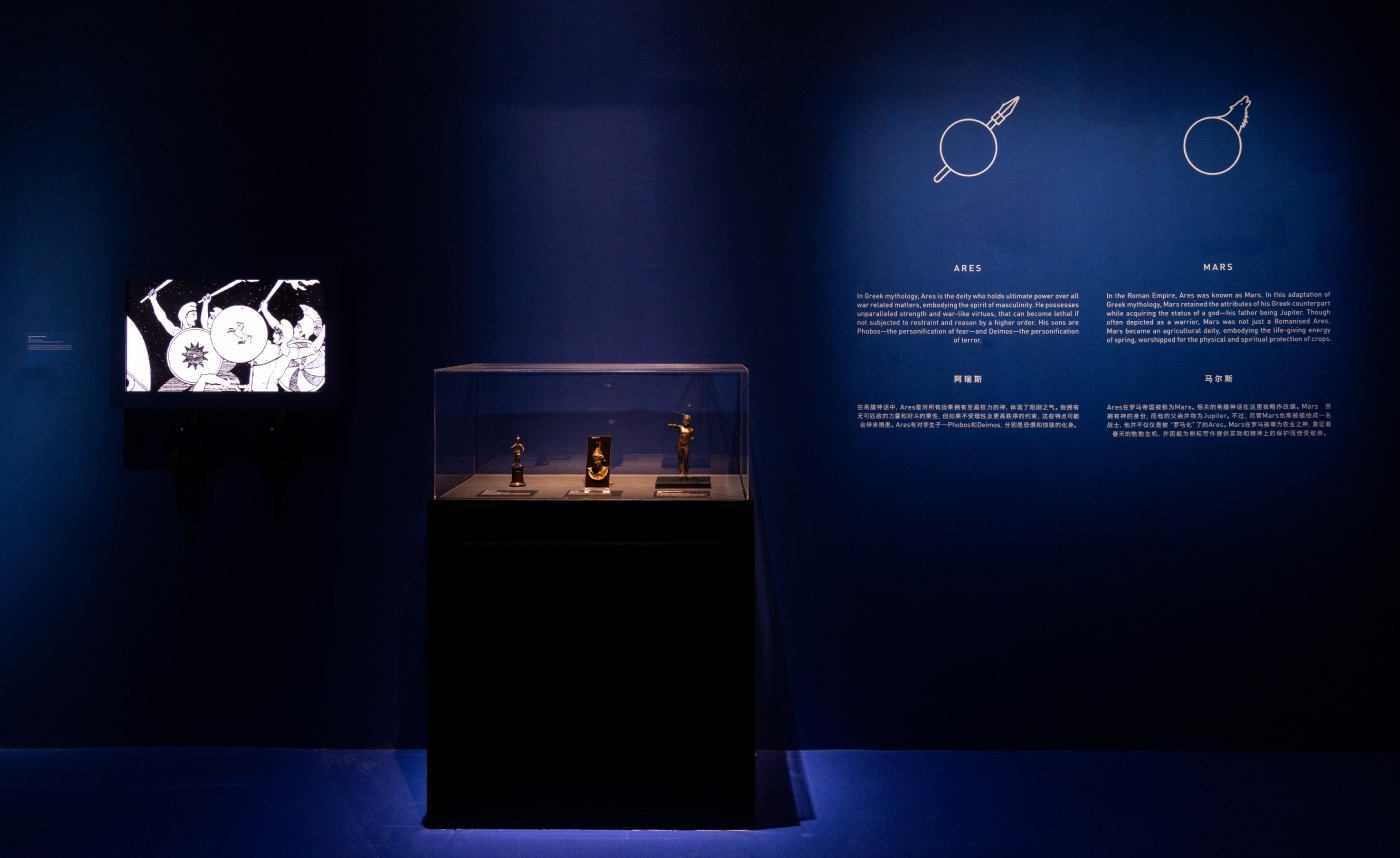
Collection of bronze figures depicting Mars as a warrior.
Highlights:
1. Figure representing a Greek warrior, Son Gelabert de Dalt (Lloret de Vistalegre, Mallorca, Spain), 500 BC, Bronze. Collection of Museu d'Arqueologia de Catalunya (Archaeological Museum of Catalonia).
2. Bust of Mars, Roman Gaul, 2nd – 3rd Century, Bronze. Collection of J.A. Lambert. Courtesy of Fine Arts Museum of Lyon.
3. Figurine of Mars, Etruria, Italy, 4th – 3rd Century BC, Bronze. Collection of J.A. Lambert. Courtesy of Fine Arts Museum of Lyon.
-
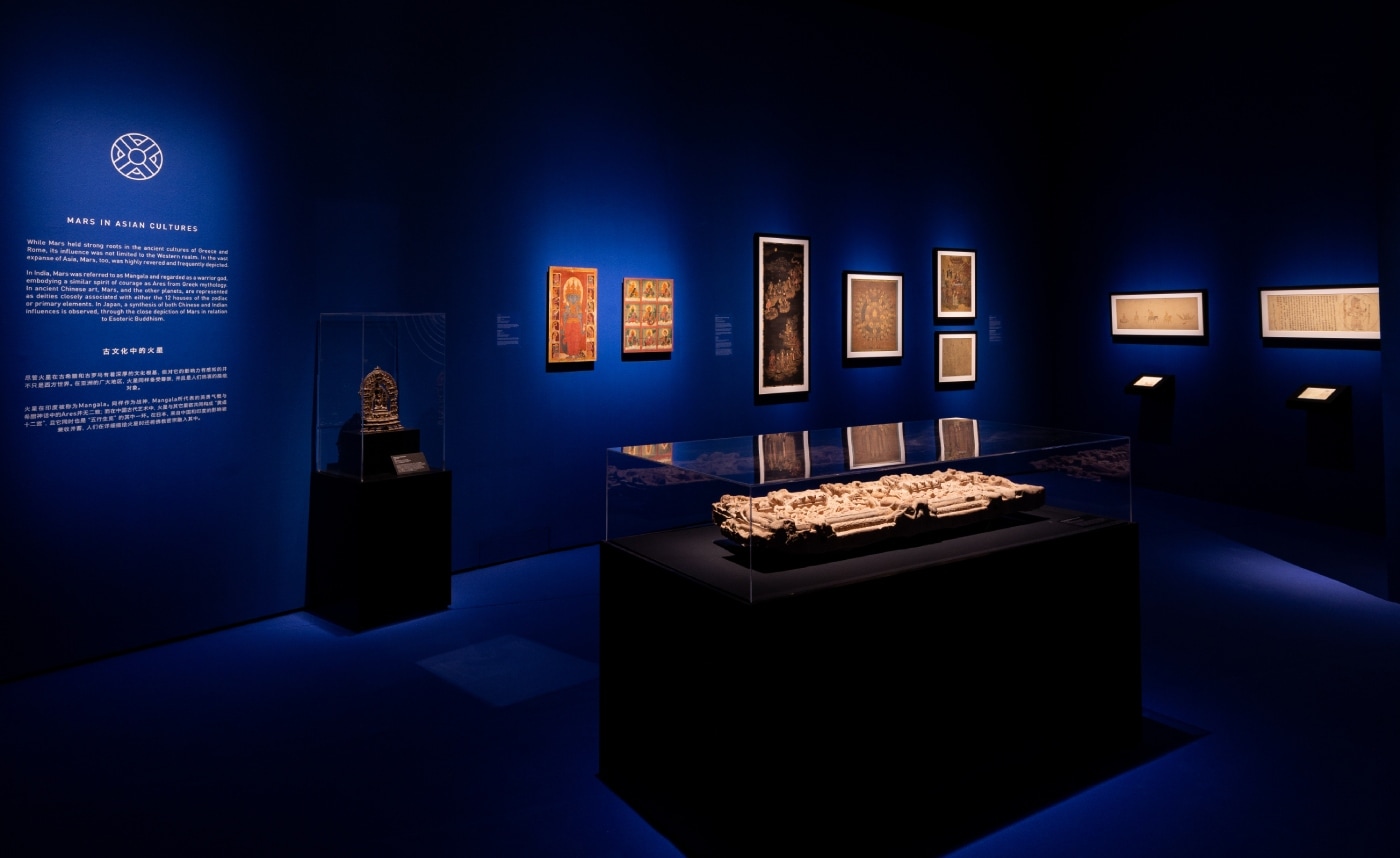
Collection of Japanese, Chinese and Indian artefacts and paintings depicting Mars.
Highlights:
1. Lintel from entrance to a Vishnu or a Durga temple, Central Madhya Pradesh, India, Mid 9th Century, Sandstone. Collection of Asian Civilisations Museum, National Heritage Board, Singapore.
2. Shrine with Jina Rishabhanatha, Eastern India, 1137, Bronze inlaid with silver and copper. Collection of Asian Civilisations Museum, National Heritage Board, Singapore.
-
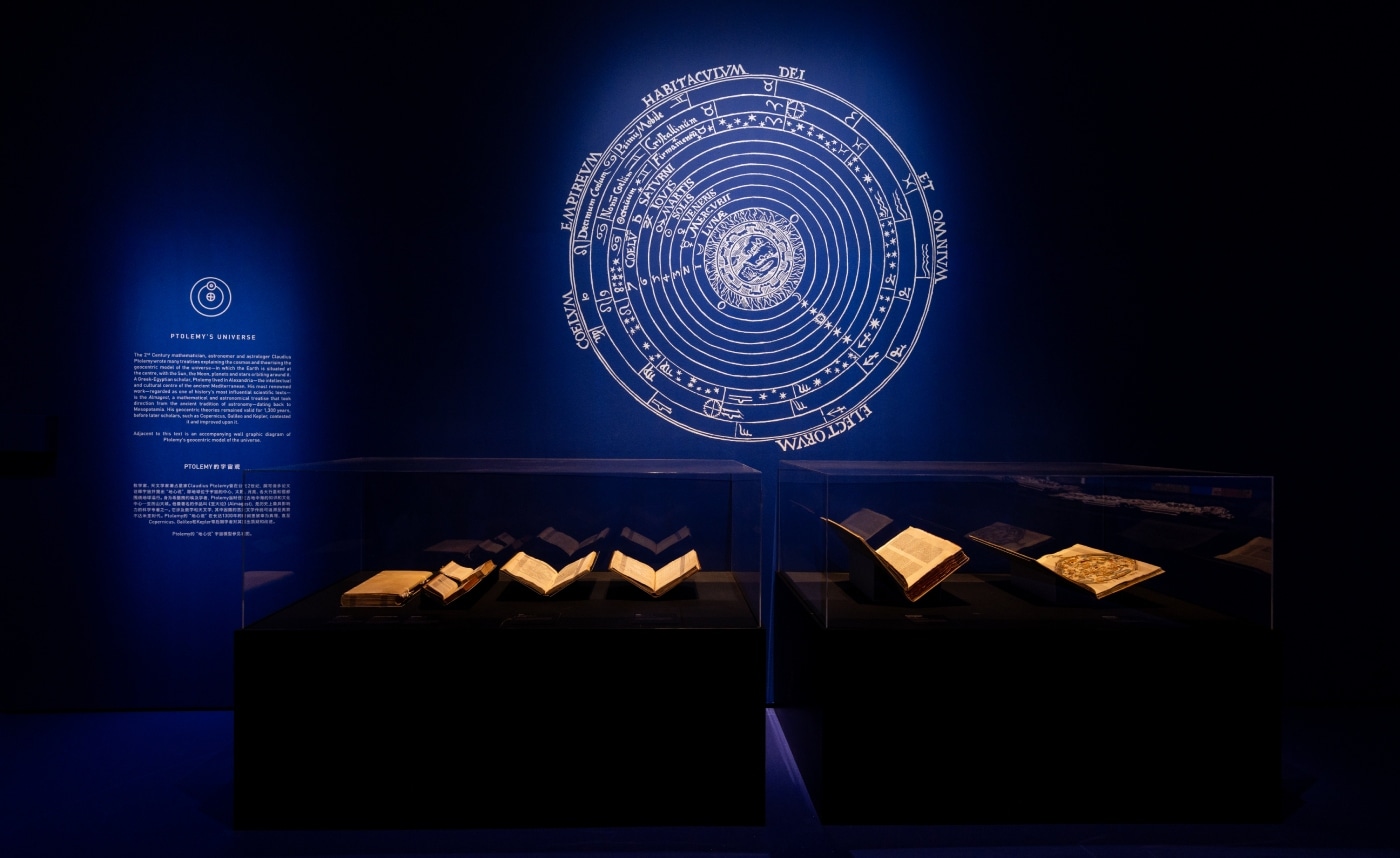
Collection of books that study Ptolemy’s proposed model of the universe: the Geocentric model—in which the Earth is situated at the centre of the universe with the planets, Sun and Moon orbiting it.
Highlights:
1. The Iliad, Homer (c. 800 BC – c. 701 BC), c. 800 BC, Book. Collection of Episcopal Library of the Conciliar Seminary of Barcelona.
2. Almagest, Claudius Ptolemy (c. 100 – c. 170), 1515, Book, 1515 edition. Collection of University of Barcelona.
3. Astronomy of the Caesars, Petrus Apianus (1495 – 1552), 1540, Book, first edition. Collection of University of Barcelona.
-
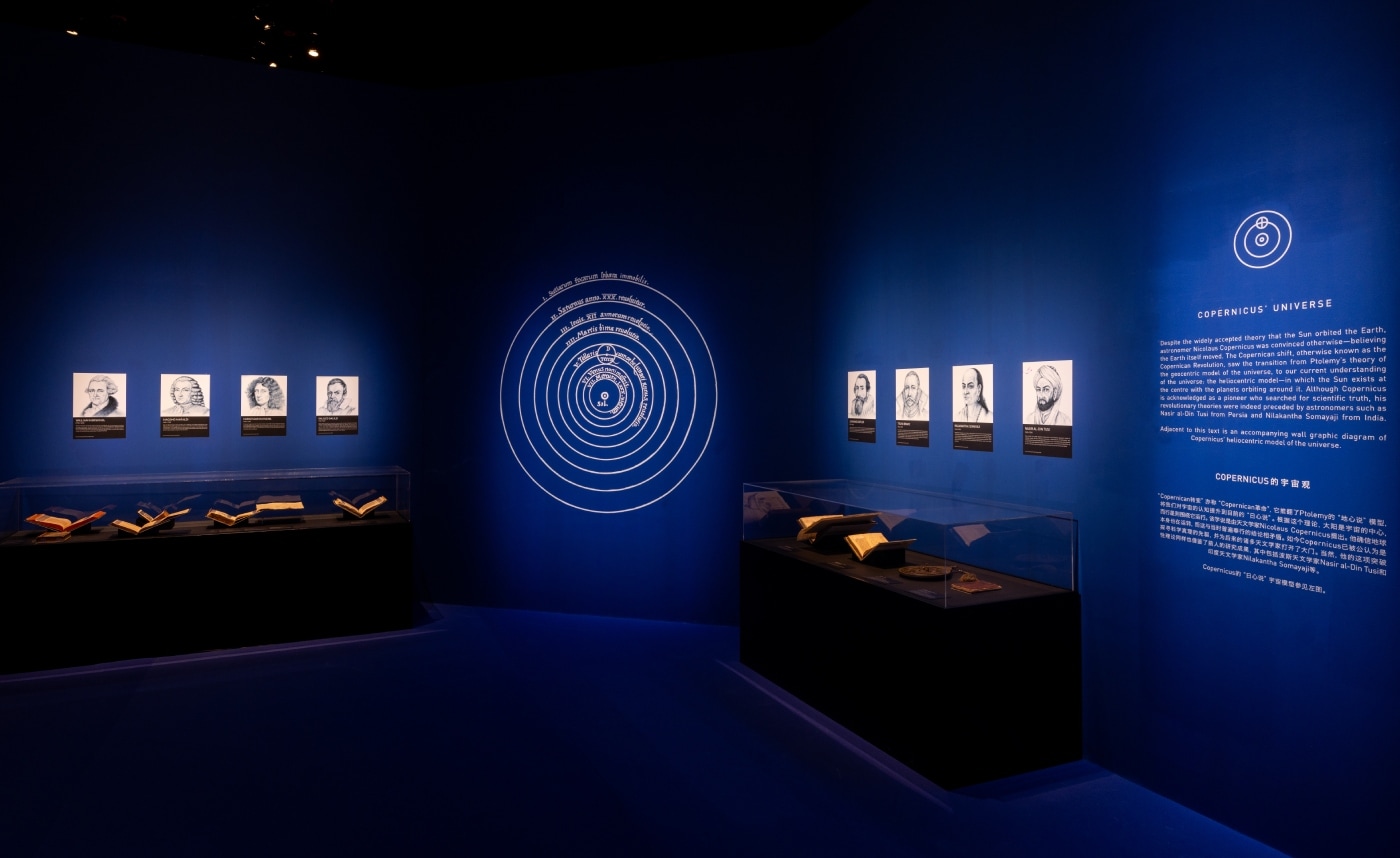
Collection of books that study the Heliocentric model of the universe—in which the Sun is situated at the centre of the universe with all other planetary bodies, including the Earth, orbiting it.
Highlights:
1. Astronomical treatise, Nasir al-Din Tusi (1201 – 1274), Iran, Shawwal 712AH (February 1313), Ink, paper (fibre product). Collection of Asian Civilisations Museum, National Heritage Board, Singapore.
2. Cosmographical Dissertations, Johannes Kepler (1571 – 1630), 1621 – 1622 (first edition published in 1596), Book. Collection of University of Barcelona.
3. On the Revolutions of the Heavenly Spheres in Established Astronomy, Nicolaus Copernicus (1473 – 1543), 1617 (first edition published in 1543), Book. Collection of University of Barcelona.
4. Dialogue Concerning the Two Chief World Systems, Ptolemaic and Copernican, Galileo Galilei (1564 – 1642), 1632, Book. Collection of University of Barcelona.
-
-
Science & Fiction of the Red Planet
Towards the end of the 19th Century, science, based on reason, evolution and progress, became the driving force. As humanity’s fascination with the mythologies of the gods faded, the captivating and enduring stories persisted and grew alongside a changing society.
Maps of Mars drawn by early astronomers were revolutionary but unknowingly, scientifically inaccurate. This, in tandem with real Mars-related scientific breakthroughs established the conditions under which science fact and science fiction collided, driving a narrative that continued to develop throughout the 20th Century.
With humanity coming to terms with the trauma of two World Wars, alongside a Space Race that offered hope for an exciting, technologically driven future, Mars, the Red Planet, was catapulted into a golden age. In just over a century, Mars had become a cultural icon.
Featured artworks
4artworks-
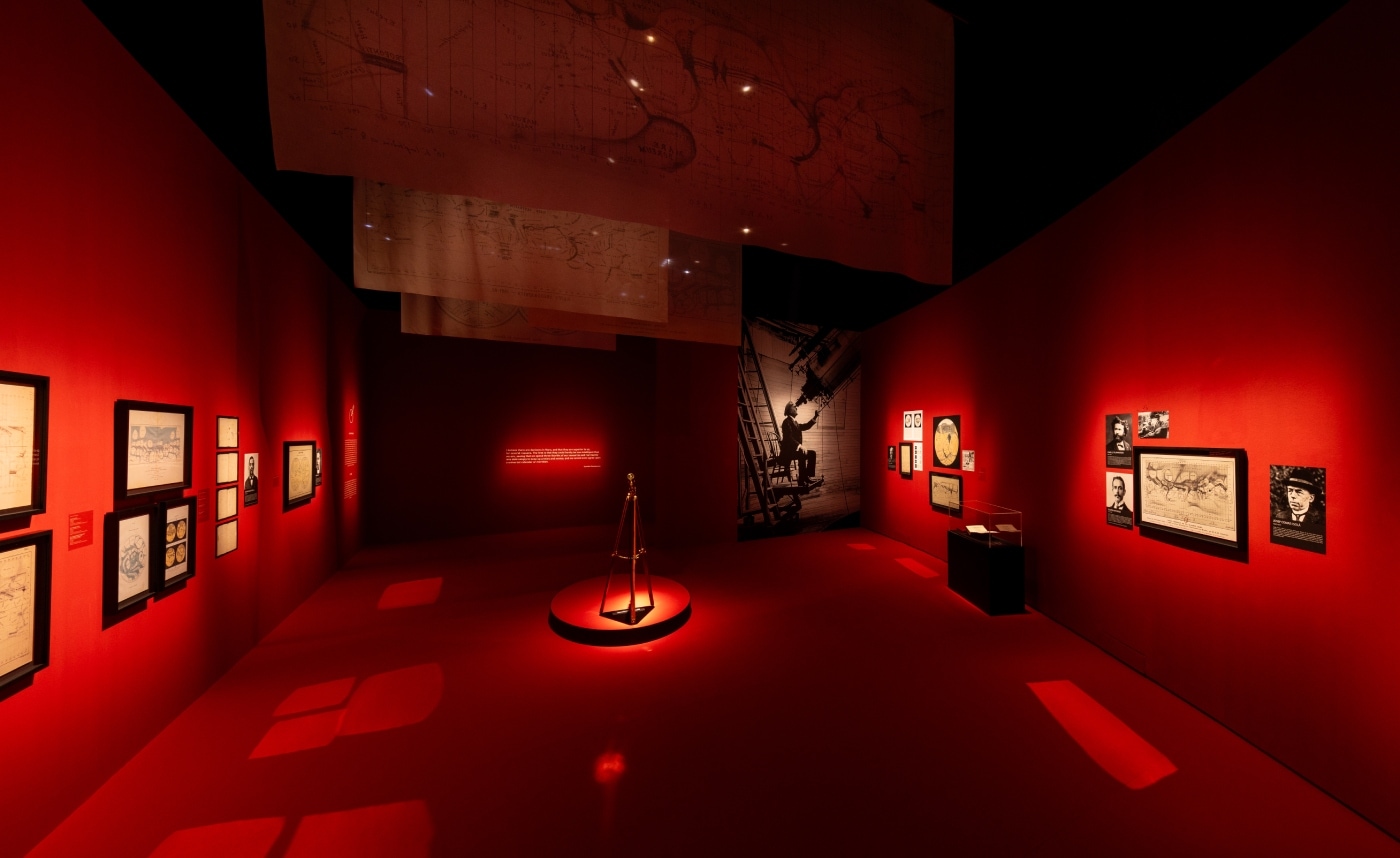
Collection of maps and transcripts, from 19th Century astronomers, that first depicted and described the surface of Mars.
Highlights:
1. Mars and Its Canals, Its Conditions for Life, Percival Lowell (1855 – 1916), 1909 (first edition published in 1906), Book. Collection of University of Barcelona.
2.‘Life on the Planet Mars’ in Natura ed arte magazine, Giovanni Schiaparelli (1835 – 1910), 1895, Book. Collection of Centre of Contemporary Culture of Barcelona.
3. Mars as the Abode of Life, Percival Lowell (1855 – 1916), 1909 (first edition published in 1908), Book. Collection of Centre of Contemporary Culture of Barcelona.
-
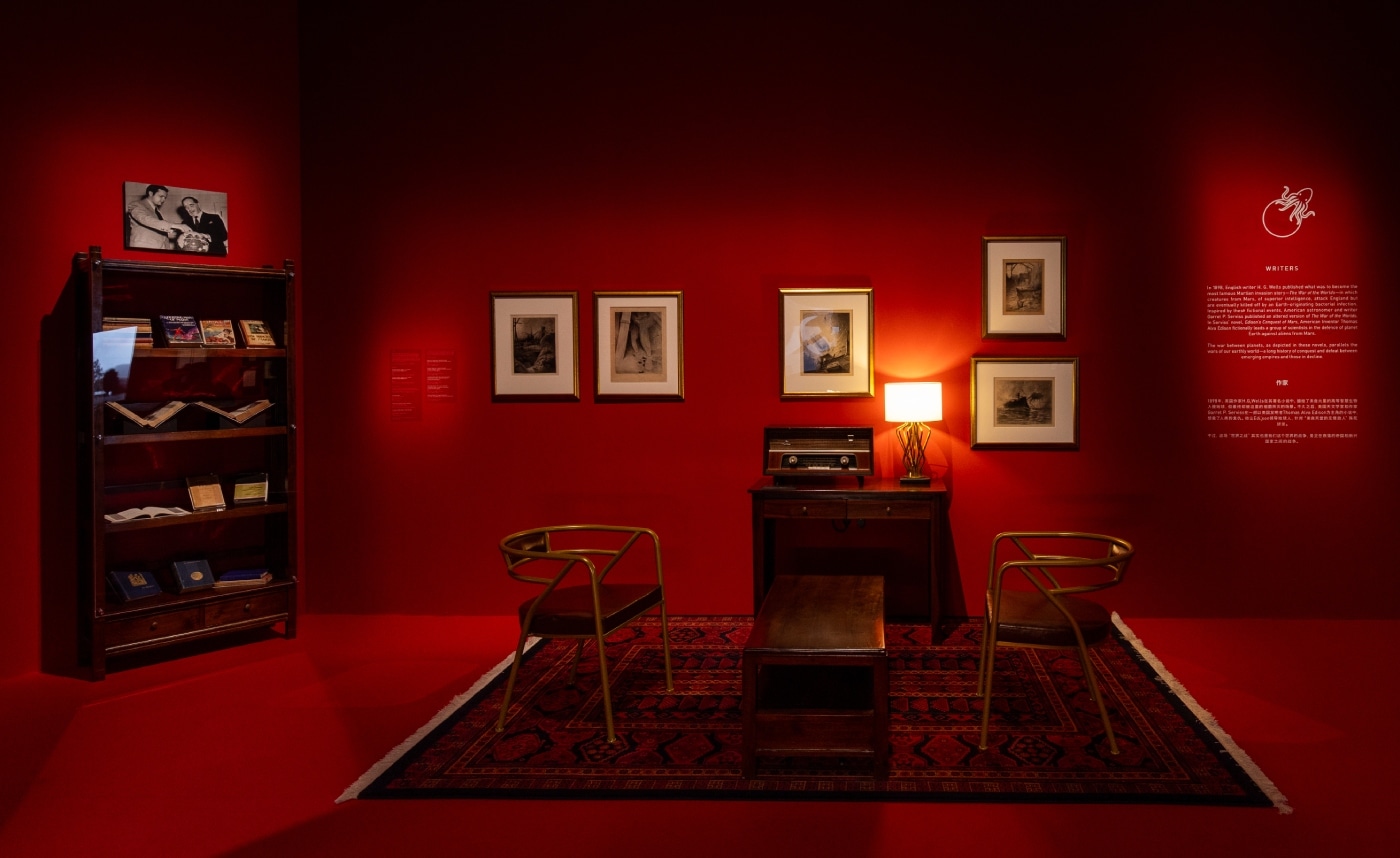
Collection of books, sketches and media related to H. G. Wells’ influential novel The War of the Worlds (1898)—one of the most influential science fiction stories depicting a Martian invasion on Earth.
Highlights:
1. Original sketches for The War of the Worlds, Henrique Alvim-Correa (1876 – 1910), 1906, Pencil, ink and charcoal on laid paper on card stock. Collection of Stefan A. Gefter.
2. The War of the Worlds, Chapters 1 – 11, 1st edition, serialised in Pearson’s Magazine, vol. 3, Herbert George Wells (1866 – 1946), 1897, Magazine. Collection of Centre of Contemporary Culture of Barcelona.
3. The War of the Worlds, radio broadcast narrated by Orson Welles, Orson Welles (1915 – 1985), 1938, Audio. Courtesy of Centre of Contemporary Culture of Barcelona.
-

Collection of over 60 Indonesian comics and Japanese manga that contain Mars related narratives, characters and scenes.
Highlights:
1. Flash Gordon: Pirates From Mars, Mac Raboy, Don Moore, 1954, comic. Collection of Venzha Christ.
2. Captain Kilat on Planet Mars, Hasmi, 1979, comic. Collection of Venzha Christ.
3. Doctor Mars, Tezuka Osamu (1928 – 1989), 2010 (first published in 1948), Manga. ArtScience Museum.
4. Sailor Mars, Naoko Takeuchi (b. 1967), 1999 (first published in 1991), Manga. ArtScience Museum.
-
-
Mars in the Anthropocene
The climate emergency is our Sword of Damocles—a closely approaching disaster. It is a force that threatens every species on planet Earth, yet the irony lies in the fact that it is a product of human activity. We are facing the most crucial dilemma of our present and future: to preserve the one and only home we have ever known, or to migrate to outer space in search of ‘Planet B’.
It is amidst this radical change in humanity’s awareness of our need for survival that Mars acts as a mirror to Earth, highlighting its very essence. This new chapter in humanity’s millennia-long adventure, to discover our place in the Universe, is marked by three main features: climate chaos, the slow process of learning to coexist with all species and the dream of a multiplanetary life.Featured artworks
4artworks-
 Mars, Luke Jerram (b. 1974), 2023, Inflatable sculpture, fabric, internal lighting, accompanying soundtrack. Collection of the artist.
Mars, Luke Jerram (b. 1974), 2023, Inflatable sculpture, fabric, internal lighting, accompanying soundtrack. Collection of the artist. -
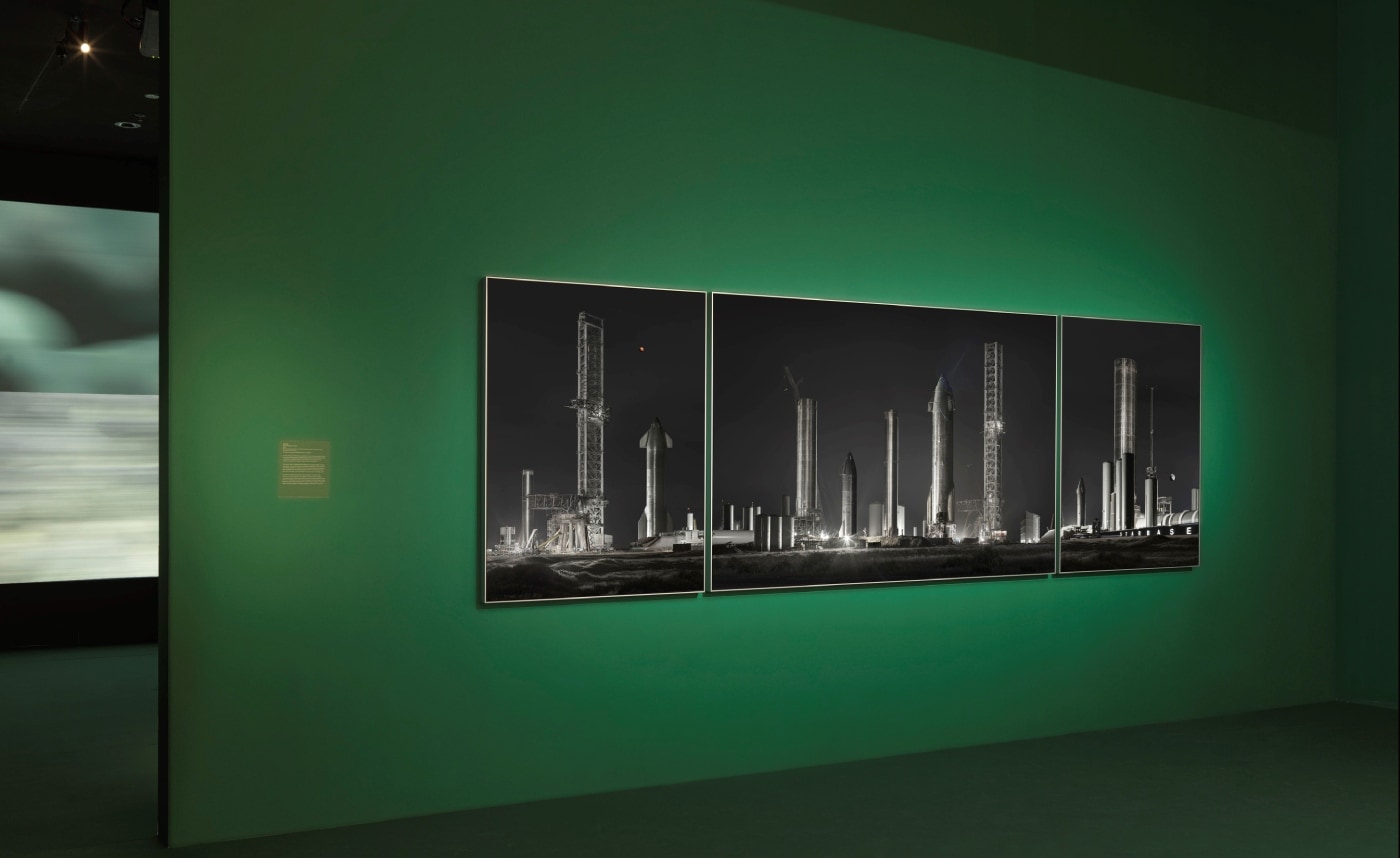 starbase, Michael Najjar (b. 1966), 2022, Archival pigment print, non-reflective anti-reflex Diasec plexi, mounted in a custom-made aluminium frame. Collection of the artist. Courtesy the artist and BANK Gallery, Shanghai.
starbase, Michael Najjar (b. 1966), 2022, Archival pigment print, non-reflective anti-reflex Diasec plexi, mounted in a custom-made aluminium frame. Collection of the artist. Courtesy the artist and BANK Gallery, Shanghai. -
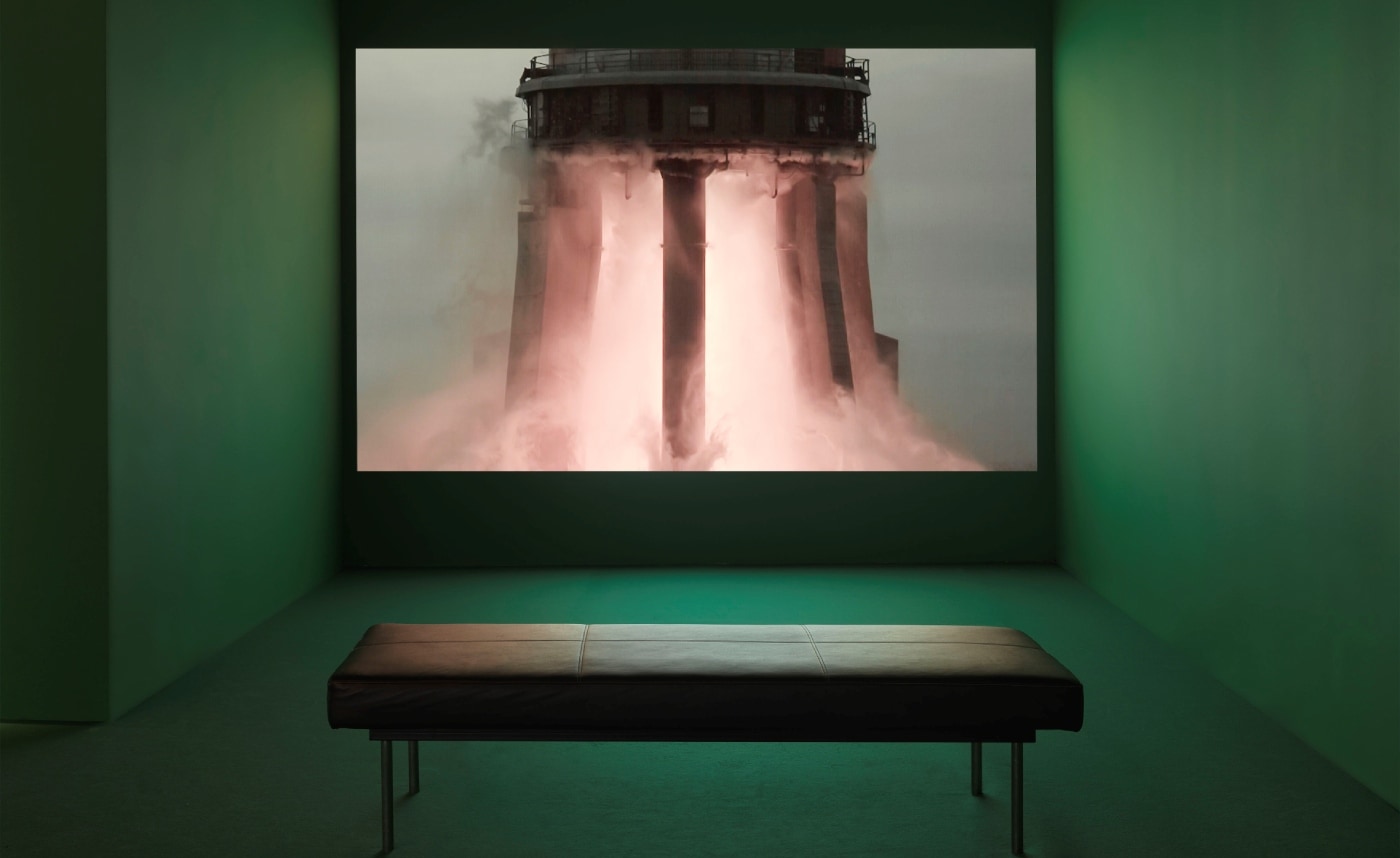 starship, Michael Najjar (b. 1966), 2023, 4K video, single channel, stereo. Collection of the artist. Courtesy the artist and BANK Gallery, Shanghai.
starship, Michael Najjar (b. 1966), 2023, 4K video, single channel, stereo. Collection of the artist. Courtesy the artist and BANK Gallery, Shanghai. -
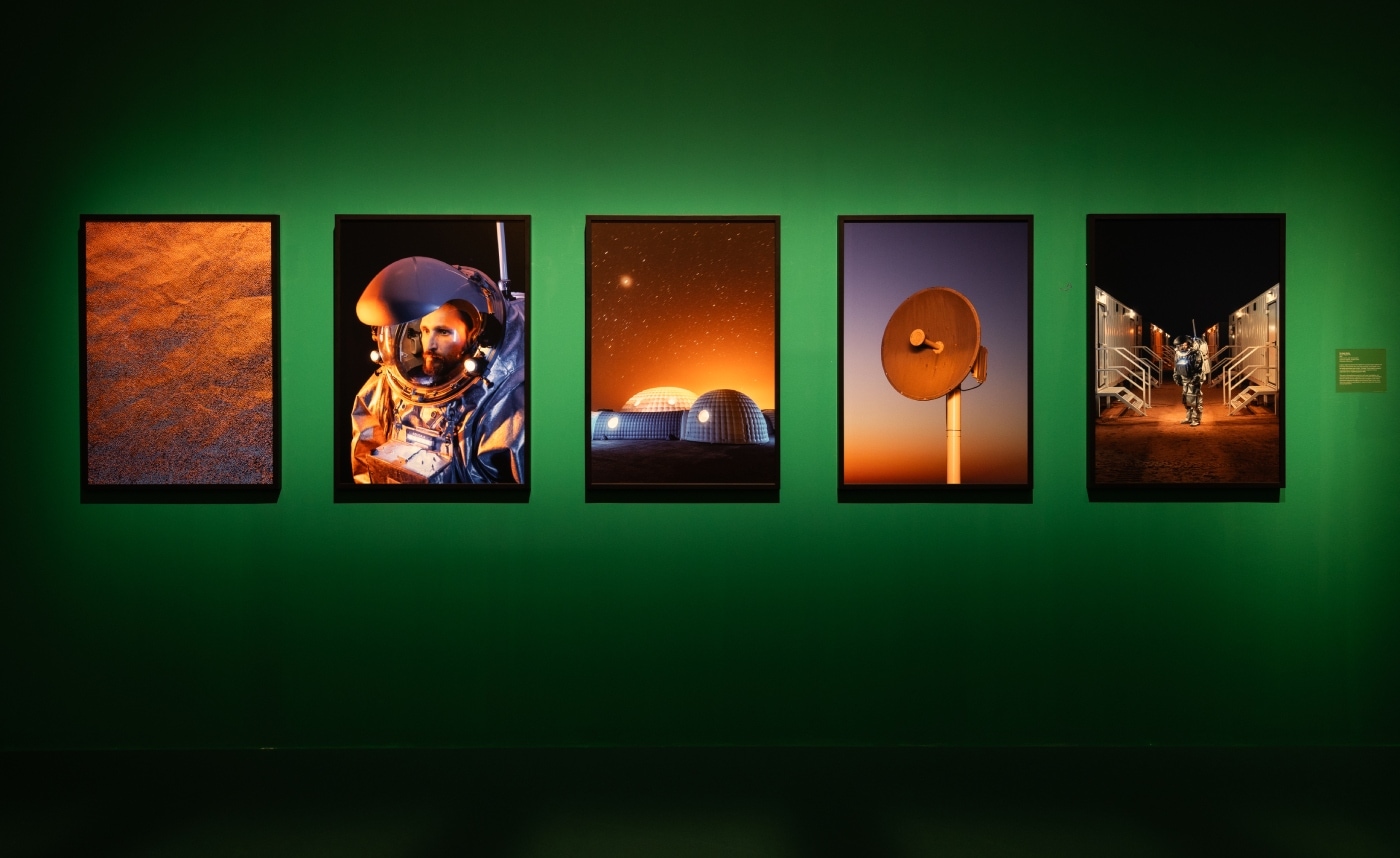 The Kepler Station, Florian Voggeneder, 2018, Fine art print, satin baryta paper, aluminium-dibond, wooden frame. Collection of the artist.
The Kepler Station, Florian Voggeneder, 2018, Fine art print, satin baryta paper, aluminium-dibond, wooden frame. Collection of the artist. -
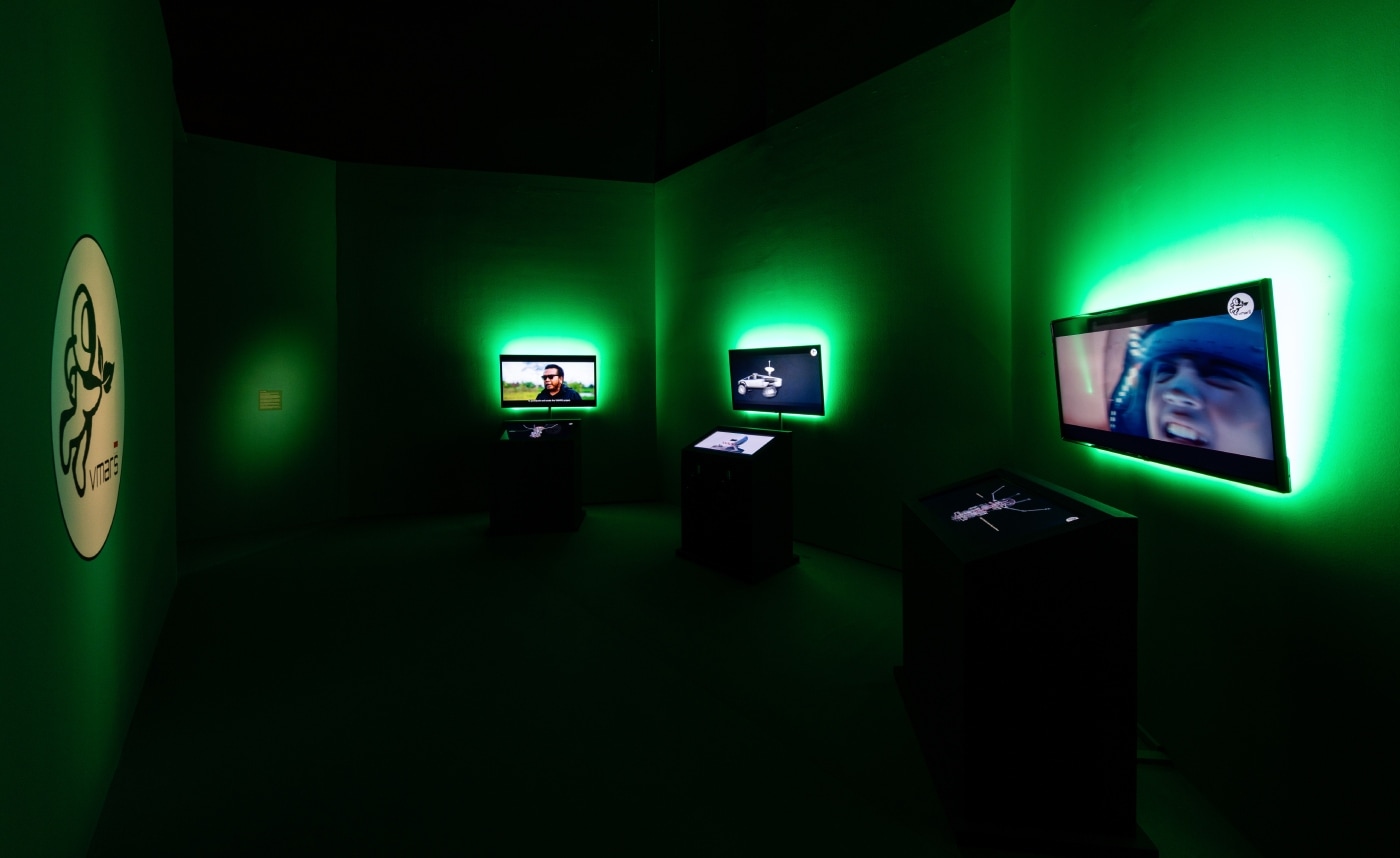 VMARS (v.u.f.o.c Mars Analogue Research Station), Venzha Christ, 2022, Audiovisual. Collection of the artist.
VMARS (v.u.f.o.c Mars Analogue Research Station), Venzha Christ, 2022, Audiovisual. Collection of the artist. -
 The Wilding of Mars, Alexandra Daisy Ginsberg, 2019, Unity simulation, 4 screen video installation with sound. Collection of the artist.
The Wilding of Mars, Alexandra Daisy Ginsberg, 2019, Unity simulation, 4 screen video installation with sound. Collection of the artist. -
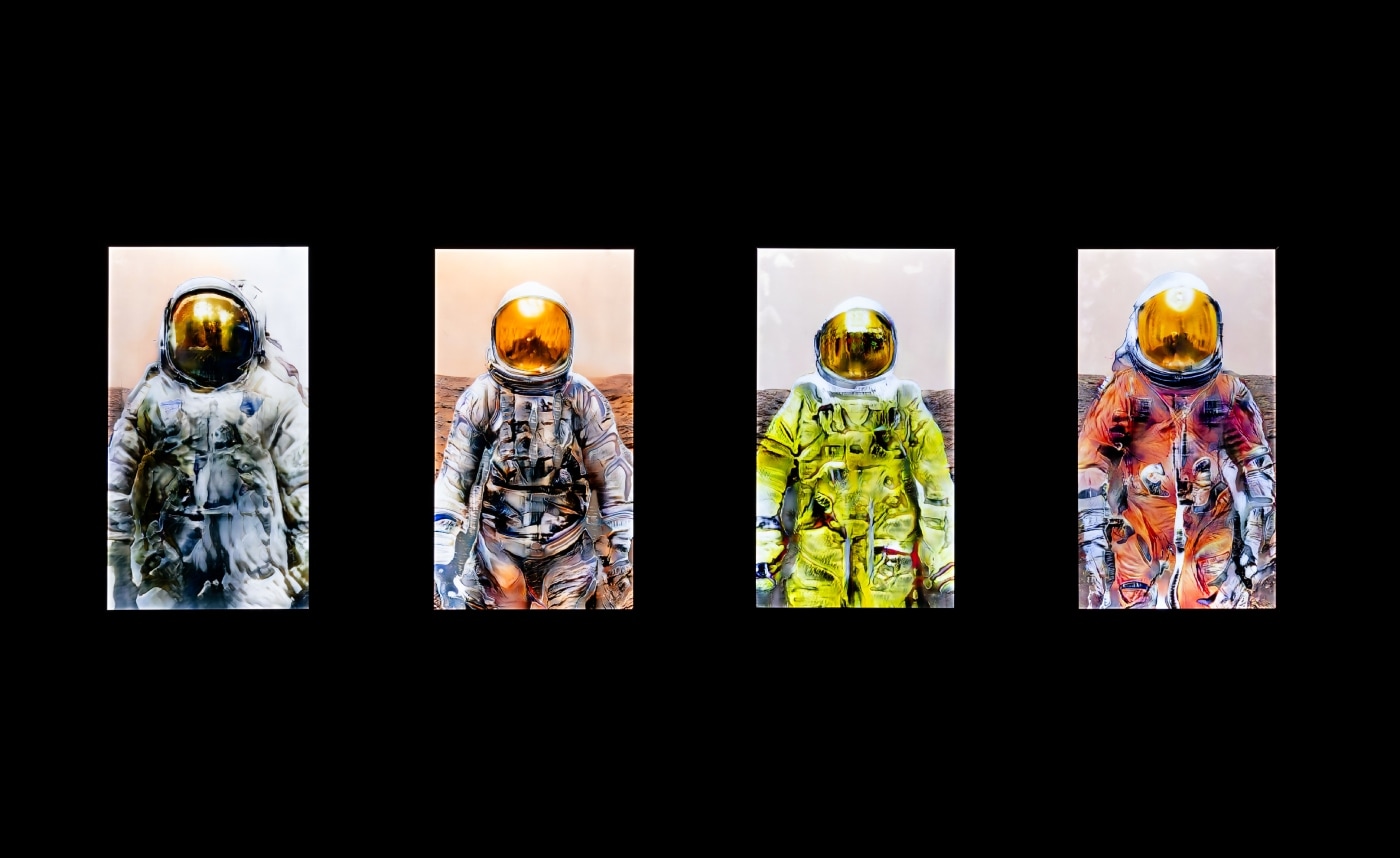 Marsonauts, Nero Cosmos, 2023, AI-generated images, lightboxes. Collection of the artist.
Marsonauts, Nero Cosmos, 2023, AI-generated images, lightboxes. Collection of the artist.
-
Offers
-
Closing Soon: Explore Mars where kids enter for free!
9 Mar – 7 Apr
Did you know that the month of March is named after the Roman god, Mars? Come on an exciting adventure through space and time at Mars: The Red Mirror. As a closing special, kids enjoy free entry with every purchase of an adult ticket!
-
-

Curators’ Tour with Juan Insua and Dimitris Kontopoulos
Join us for an exclusive curators’ tour of Mars: The Red Mirror, conducted by Juan Insua, the curator of the exhibition and former Director of CCCB Lab. Together with ArtScience Museum’s Senior Producer, Dimitris Kontopoulos, you will be guided through the exhibition while discovering incredible stories and scientific explorations of the Red Planet.
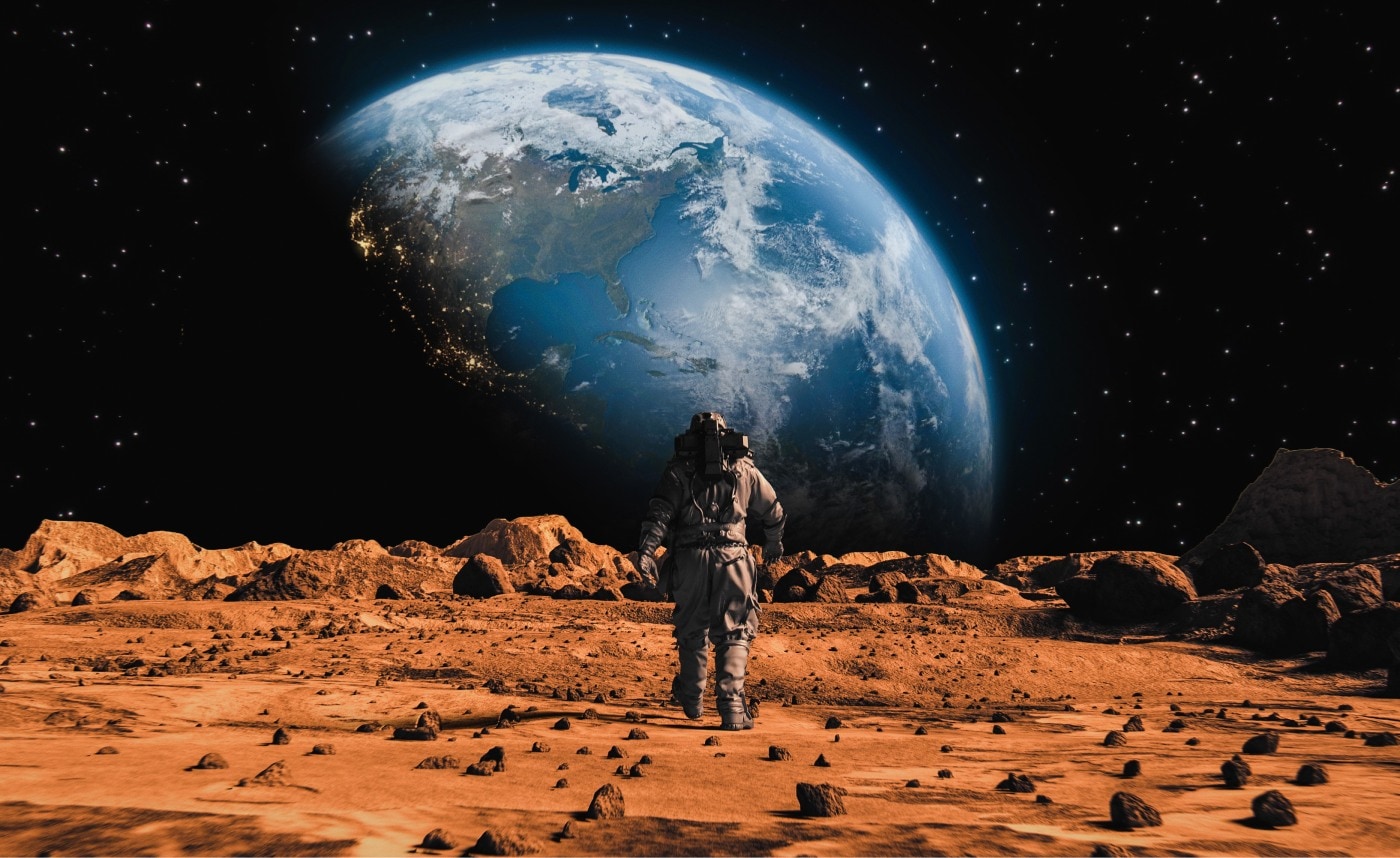
Opening Symposium
Humanity Reimagined – Mars Opening Symposium
25 Nov (Sat), 2pm
ArtScience Cinema, Level 4
Ticketed admission: S$10
In the opening symposium of Mars: The Red Mirror, join us to explore how Mars has long captured our collective imagination and what it represents for humanity.
See more
In Search of Tomorrow
In Search of Tomorrow
ArtScience Cinema, Level 4
Mix of free and ticketed admission with online pre-booking
Spaceships, aliens, floating cities and red dusty planets - in the shiny and bold world of science-fiction, humanity's aesthetic of the future has always been shaped by our fear of the unknown, and our unshakable desire to peek behind the curtain.See more
Related Activities
- Guided Tours
- In-Gallery Quest
- Drop-In Session
-
Every Tuesday, 4pm starting from 28 Nov 2023
Basement 2, Exhibition Galleries
Explore the fascinating world of Mars – our closest planetary neighbour in the solar system and a prospective home for humanity. Alongside our Education Specialists, discover the cultural influences and science of the Red Planet, from ancient tales to present space missions.
-
Mars Quest for Kids
4 Dec 2023 – 7 Apr 2024
Basement 2, Exhibition Galleries
Complimentary to Mars: The Red Mirror ticket holders.
Recommended for kids 7 years old and above.Embark on a quest into Mars: The Red Mirror to discover the wonders of the Red Planet!
Explore ancient sculptures and paintings that depict Mars, and learn about key figures, space missions, and the planet itself through fun facts, games, and quizzes.
Scan the QR code at the entrance of the exhibition to launch the quest!
-
Create Your Own Martian Animation
Weekdays on Jan, Feb and Mar
Basement 2, Circulation Space
Drop-in is complimentary.
Moving to Mars is an adventure to tell! How would you bring this story to life? In this drop-in, make your own flipbook and animate your story of travelling to Mars.

Exhibition Curator

Our Partners
Centre de Cultura Contemporània de Barcelona (CCCB)
You May Also Like
-
-
EXHIBITION
Future World:
Where Art Meets ScienceFuture World: Where Art Meets Science at ArtScience Museum is currently closed for revamp works. We apologise for any inconvenience caused.
Immerse yourself in a world of art, science, magic and metaphor through a collection of digital interactive installations.
-







